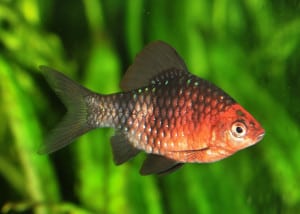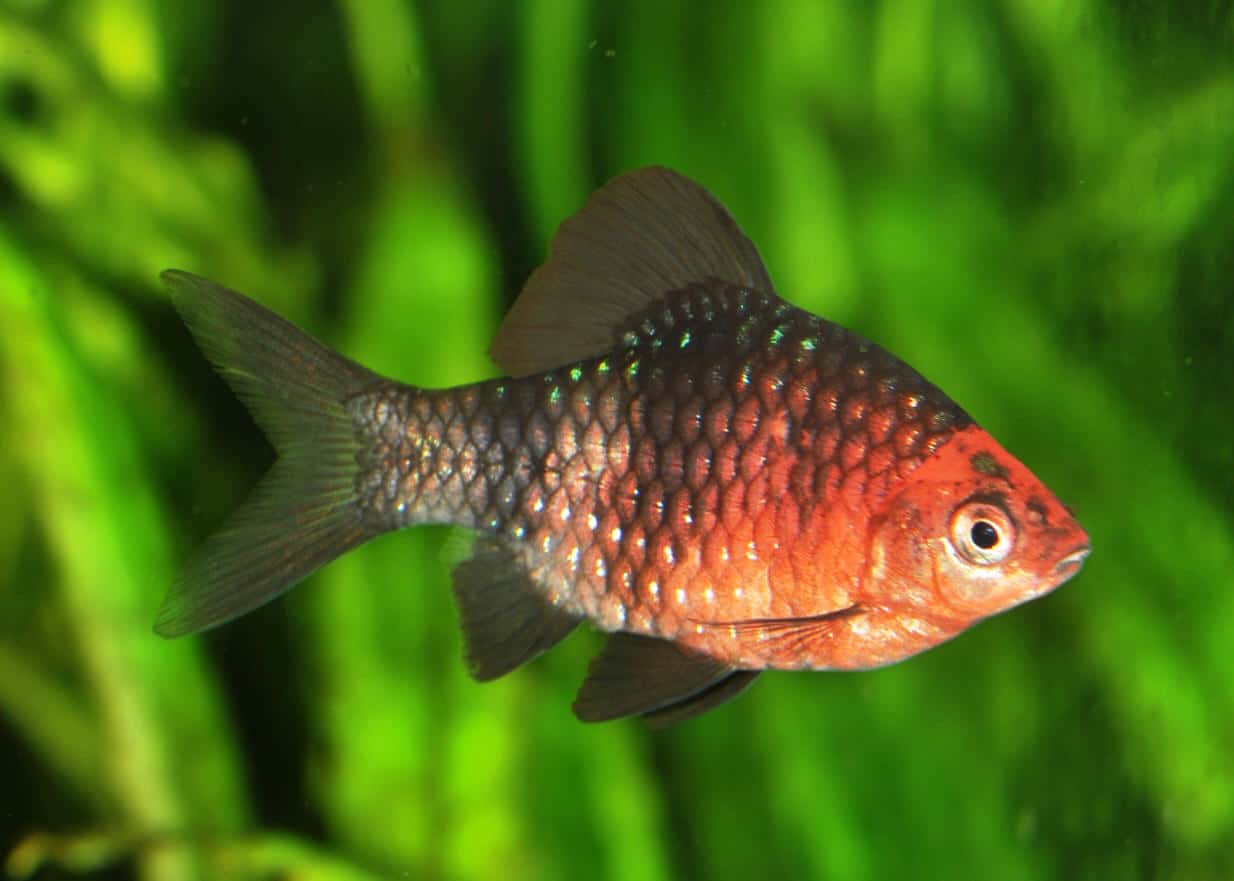
Common name: Black Ruby Barb, Purple-Headed Barb, Ruby Barb
Scientific name: Puntius Nigrofasciatus
Average Adult Fish Size: 2.8 inches / 7 cm
Place of Origin: Mountain streams in Sri Lanka
Typical Tank setup: A well planted aquarium with rock work and driftwood / bogwood. Plants will give the weaker individuals a place to hide, until the pecking order of the school is established.
Recommended Minimum Aquarium Capacity: 30 gallon / 120 litre
Compatibility: The Black Ruby Barb needs to be kept in schools. The larger the school the better with 9 fish a good minimum amount. If kept in smaller schools the weaker individuals will be harassed continuously by the more aggressive individuals until they die. Black Ruby Barbs have a tendency to nip the fins of slow fish and ones that have long flowing fins. The way to combat this is to keep them in a large enough school. If this is done, they will generally keep themselves busy within the school and usually not bother their tankmates too much. If kept with smaller fish, they too should be kept in a school.
Temperature: 68 – 79 Deg F / 20 – 26 Deg C
Water chemistry: pH 6.0 – 8.0
Feeding: Omnivorous. The Black Ruby Barb should be fed a varied diet of flakes, small pellets, frozen and live foods such as daphnia and brine shrimp. Blood worms and brown worms can also be fed as a treat, but do not feed worms very often as they can cause bloat.
Sexing: As with many species, the male Black Ruby Barb is larger and more brilliantly coloured the female particularly during spawning season. The fins of the males are darker. Females have a rounder belly and may be longer in overall length. The female does not undergo a significant colour change when spawning.
Breeding: Black Ruby Barbs are egg-scatterers that may be bred in pairs or in groups. This species readily eats their own eggs, and must be removed from the spawning tank once the eggs have been laid and fertilized. The water in the spawning tank should be soft and acidic, and 77-82 F. Fine leaved plants such as Java Moss, or spawning mops, should be provided for the fish to scatter their eggs upon. Lighting should be very dim.
Additional Information: Currently the export of wild caught Ruby Barbs from Sri Lanka is prohibited. All specimens sold in the aquarium trade are commercially bred, either in Sri Lanka or a number of other countries that commercially breed aquarium fish. This commercial breeding has resulted in the creation of a variety of new color and fin variations of the Ruby Barb.


Related Posts
Croaking Gourami – Trichopsis vittatus
Benthochromis Tricoti
Large-eyed Mouthbrooder – Callochromis Macrops